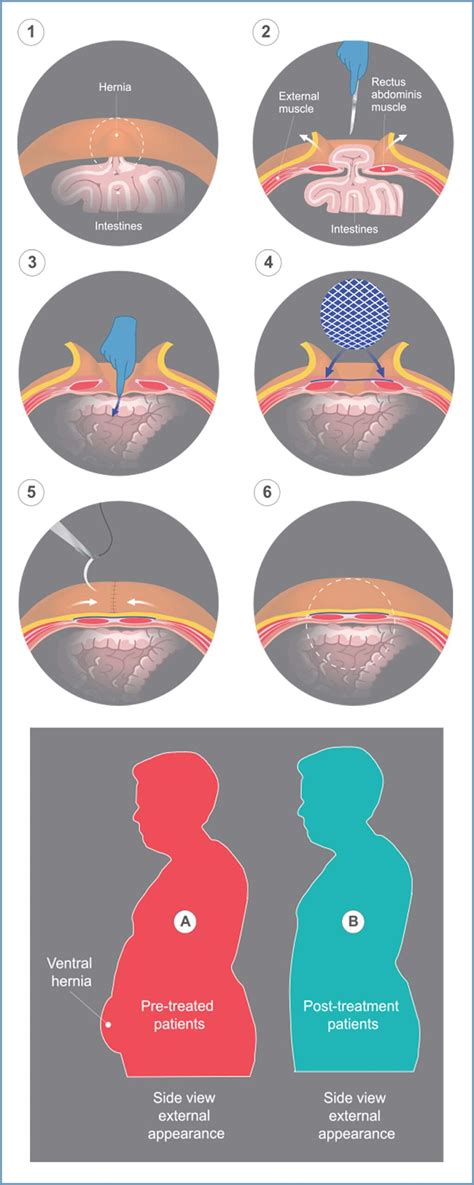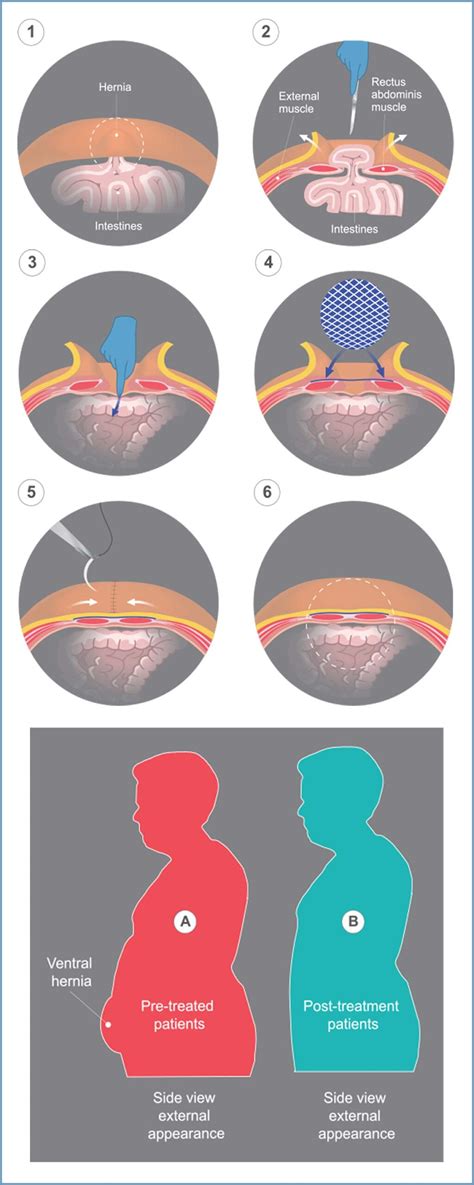Intro
Learn about umbilical hernia repair surgery, a safe and effective procedure to treat abdominal bulges. Discover the causes, symptoms, and treatment options for umbilical hernias, including laparoscopic and open surgery methods. Understand the risks, benefits, and recovery process to make informed decisions about your hernia repair.
Umbilical hernias are a common condition that affects millions of people worldwide. They occur when part of the intestine bulges through an opening in the abdominal wall near the navel, causing discomfort, pain, and potentially serious complications if left untreated. While umbilical hernias can be treated with non-surgical methods, surgery is often the most effective way to repair the hernia and prevent future occurrences. In this article, we will delve into the world of umbilical hernia repair, exploring the benefits, risks, and what to expect from the surgical procedure.

Understanding Umbilical Hernias
Before we dive into the surgical procedure, it's essential to understand what causes umbilical hernias and how they can affect daily life. An umbilical hernia occurs when there is a weakness in the abdominal wall, allowing part of the intestine to protrude through the navel. This can happen due to various factors, such as:
- Weakened abdominal muscles
- Increased intra-abdominal pressure
- Congenital defects
- Previous surgery or trauma
Symptoms of an umbilical hernia may include:
- A visible bulge near the navel
- Discomfort or pain when coughing, straining, or lifting heavy objects
- Nausea and vomiting
- Abdominal tenderness
If left untreated, umbilical hernias can lead to serious complications, such as:
- Incarceration: The intestine becomes trapped in the hernia, cutting off blood flow.
- Strangulation: The intestine becomes twisted, cutting off blood flow and leading to tissue death.
- Obstruction: The intestine becomes blocked, preventing normal bowel movements.
Treatment Options
While non-surgical methods, such as hernia belts and lifestyle modifications, can provide temporary relief, surgery is often the most effective way to repair an umbilical hernia. There are two primary surgical approaches:
- Open hernia repair: A single incision is made near the navel to access the hernia.
- Laparoscopic hernia repair: Several small incisions are made to insert a laparoscope and repair the hernia.
The Surgical Procedure

The surgical procedure for umbilical hernia repair typically involves the following steps:
- Preparation: The patient is given general anesthesia and prepared for surgery.
- Incision: The surgeon makes a single incision near the navel for open hernia repair or several small incisions for laparoscopic hernia repair.
- Hernia identification: The surgeon identifies the hernia and gently pushes it back into place.
- Mesh placement: A mesh material is placed over the weakened area to reinforce the abdominal wall.
- Closure: The incision is closed with sutures or staples.
Risks and Complications
As with any surgical procedure, there are risks and complications associated with umbilical hernia repair. These may include:
- Infection
- Adhesions
- Hernia recurrence
- Nerve damage
- Reaction to anesthesia
Recovery and Aftercare

After surgery, patients can expect:
- Mild discomfort and pain
- Swelling and bruising
- Fatigue
To ensure a smooth recovery, patients should:
- Follow a liquid diet for several days
- Avoid heavy lifting and strenuous activities
- Take pain medication as directed
- Attend follow-up appointments with their surgeon
Benefits of Umbilical Hernia Repair
Surgery can provide several benefits for patients with umbilical hernias, including:
- Relief from symptoms
- Prevention of complications
- Improved quality of life
- Reduced risk of recurrence
What is the success rate of umbilical hernia repair surgery?
+The success rate of umbilical hernia repair surgery is high, with a recurrence rate of less than 5%.
How long does it take to recover from umbilical hernia repair surgery?
+Recovery time varies, but most patients can return to normal activities within 2-4 weeks.
Can umbilical hernia repair surgery be performed laparoscopically?
+Yes, laparoscopic umbilical hernia repair is a minimally invasive procedure that can be performed through several small incisions.
In conclusion, umbilical hernia repair surgery is a safe and effective procedure that can provide relief from symptoms and prevent complications. By understanding the benefits and risks, patients can make informed decisions about their treatment options. If you're considering umbilical hernia repair surgery, consult with a qualified surgeon to discuss your individual needs and determine the best course of treatment.
Feel free to ask any questions or share your experiences with umbilical hernia repair surgery in the comments below!
